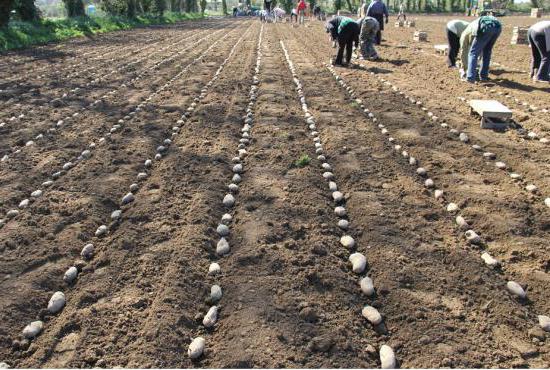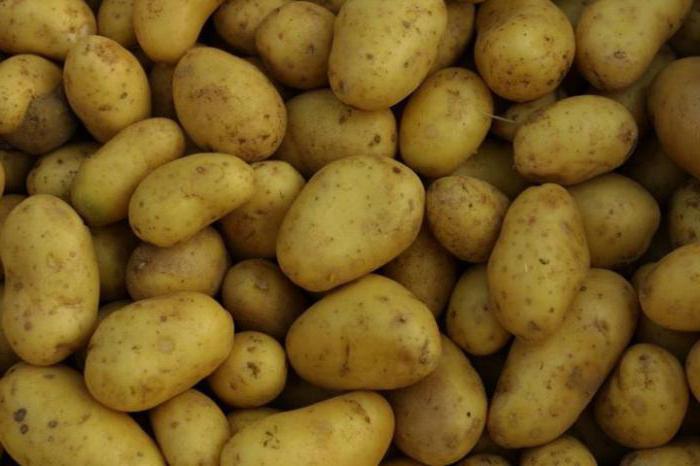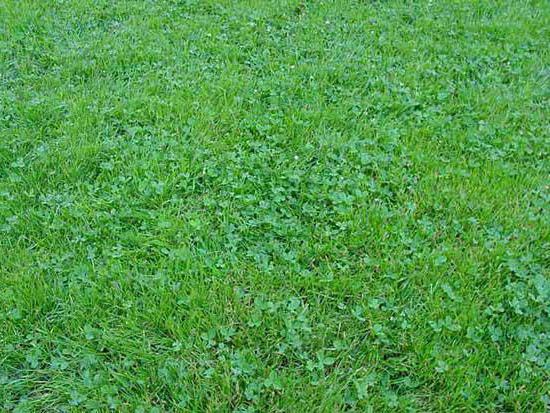Crops are called crops cultivated by farmers and large agro-industrial enterprises in order to obtain food, feed for livestock, and technological raw materials. There are several main types of such plants. Of course, the cultivation of crops should be carried out with the exact observance of certain technologies.
The main types
Most agricultural enterprises have a wide specialization and grow a wide variety of crops. It can be cereals, vegetables, fruit trees, root crops, etc. But most often in Russia such crops are cultivated as:
- wheat, barley, rye and oats;
- potatoes;
- sunflower;
- forage grasses;
- sugar beet.
These are the main types of crops in our country. Of course, domestic farmers are sometimes involved in growing vegetables. Such crops are most often cultivated in greenhouses.

Cereal growing technology
When cultivating oats, wheat, barley and rye, agricultural enterprises carry out the following activities:
- basic and presowing soil preparation;
- fertilizer application;
- seed preparation;
- sowing;
- nursing care;
- harvesting.
Sowing dates
Grain crops can be cultivated in the winter or spring method. In the first case, sowing takes place in the autumn, in the second - in the spring. The most important task when growing crops is to determine the timing of planting seeds in the soil. They should be selected so that winter grains reach the tillering phase before the onset of cold weather and form at least 3-4 shoots. Therefore, the optimal period for sowing crops in the non-chernozem zone of Russia is the first decade of September. Sometimes landing is done at the end of August. When cultivating spring crops, sowing time is determined by the condition of the soil. Most often, cereals are planted in mid or late April.
Plowing land
Soil cultivation before sowing cereals is carried out so that as much as possible post-harvest residues remain on the surface. This is necessary in order to avoid erosion and save as much moisture as possible in the ground.
In most cases, various kinds of mineral fertilizers are applied for plowing. Further, spring-spring harrowing is carried out for spring crops, and pre-sowing cultivation for winter crops.
Sowing seeds
After the soil is prepared, the actual planting of grain is carried out. In this case, only healthy, undamaged seeds that meet the prescribed standards are used. Before sowing, they are etched to avoid infection with fungal, bacterial and other diseases. Winter crops are grown from seeds from last year's crop. Special funds are created for their storage at agricultural enterprises. Freshly picked seeds are rarely used when planting. The fact is that they have reduced germination. At the final stage of planting, seeds are rolled in to improve their contact with the soil.
Cereal care
Subsequently, to obtain a good harvest, such events are held:
- Protecting cereals from pests and diseases. As necessary, treat with fungicides and insecticides.
- Weed removal. In this case, crops are treated with herbicides.
- Top dressing. Fertilize cereals during the season, usually using nitrogenous compounds.

Harvest
This operation can be performed in two ways: directly or separately. Two-phase harvesting is performed for unevenly ripened, lodged or heavily clogged crops. In all other cases, the usual direct combining is performed.
Potato cultivation technology
Cereals are the main plant species cultivated by domestic agricultural enterprises. However, potatoes are quite widespread. The technology for cultivating this crop includes the following steps:
- soil preparation;
- landing;
- plant care;
- harvesting.
Land preparation and planting
Allotments for potatoes are usually chosen with loose soil, well permeable to moisture and air. Only in such areas can you get good harvests of this crop. The best predecessors for potatoes are winter cereals, corn, perennial and annual herbs.
Prepare the soil for potatoes usually in the fall. At the same time produce plowing (autumn) with fertilizer. In April, the soil surface is leveled and early spring harrowing is carried out.
Only healthy, intact large and medium sized tubers are used for sowing. 10-12 days before landing they are unloaded from the store and sorted out. Then the tubers are germinated or simply dried. Sometimes before planting, potatoes are treated with ash, mineral fertilizers and fungicides.
Tubers are planted only in well-warmed soil. At the same time, 55-60 thousand bushes are placed on 1 ha. Early varieties are usually planted denser, later - less often. Actually, the landing itself can be ridge, half-ridge, or smooth. The first two methods are more often used on moist or heavy soils. Combs are cut a few days before planting.

Potato care
The first seedlings of this culture appear after about two to three weeks. With a smooth landing in agricultural enterprises, harrowing is carried out. It can be carried out before shoots or on shoots. In the future, care for potatoes comes down to hilling and weeding. The first operation is performed twice a season: with bushes 15-18 cm high and before flowering. Weeding is carried out as necessary. Planting crops of this variety, among other things, should be periodically processed from late blight (fungicides) and the Colorado potato beetle ("Decis", "Volaton").
Cleaning
The ripening time of tubers depends primarily on the variety of potatoes. To facilitate harvesting mechanically in agricultural enterprises, the tops are usually mowed. Perform this operation in 3-5 days. Actually cleaning can be performed in three ways:
- direct combining - on light crops;
- by separate technology - on heavy soils;
- in a combined way.
Seed tubers are kept in the light 10-12 days before easy greening before laying them for storage. Table potatoes are dried in the air for several hours. Of course, like any other major crops, potatoes should be stored properly. Tubers are laid for the winter in dark, cool rooms in bulk or in boxes.

Sunflower cultivation technology
It is customary to grow this culture after winter and spring grains. Pre-sowing preparation of land for sunflower includes operations such as plowing, harrowing and leveling the soil with special drags. Cultivation is carried out to a depth of planting seeds (6-10 cm). Manure is usually used as fertilizer for plowing. Mineral top dressing can sometimes be used (depending on soil composition).
For sowing, the seeds of the varieties and hybrids entered in the register are used with a germination rate of at least 95%. Planting is carried out in well-heated soil at the rate of 30-50 thousand plants per hectare. Sowing is carried out in a dotted manner. At the final stage, the sites are rolled.
Sunflower care in our country is carried out using exclusively mechanized methods. The first operation is such as harrowing to seedlings and on them, with simultaneous weeding and the use of herbicides. Further, sunflower care includes procedures such as:
- The fight against graininess. To do this, hives are placed on the allotment at the rate of 1.5-2 per hectare.
- Pest and disease control using chemicals.
Harvesting is done after the back of the baskets turns yellow. Reed flowers should fall. Sunflower, like most other agricultural crops, is harvested with special combines.
Technology for growing forage grasses
Crops of this group can be cultivated as pasture or for hay or silage. There are many species of forage grasses. But most often in our country alfalfa, clover, vetch and bean are grown. The technology of their cultivation, like any other agricultural crops, includes soil preparation, sowing, care and harvesting.

A feature of growing herbs is a very deep, 25-30 cm, cultivation (due to long roots), the ability to sow perennial crops under the cover of annuals and fertilizing with mineral fertilizers during the growth period. The plants are harvested in the budding or flowering phase.
Sugar Beet Growing
Under this culture in Russia about 21 thousand hectares of arable land are used. The optimal depth of plowing the land for beets is 25-30 cm. Such cultivation is performed in the fall - usually in September. At the same time, manure is added in an amount of 40-80 t / ha. Pickled seeds are used for sowing. Landing is performed to a depth of 25-35 mm, depending on the type of soil using special seeders. Beet care consists mainly in weeding or using herbicides, as well as protecting plants from pests and diseases using chemical agents. Harvesting of this crop usually begins on September 20-25. In this case, in-line, transshipment or combined technologies can be used. The last two methods are usually used for increased clogging of areas.
Growing vegetables in greenhouses
A feature of the cultivation of crops of this variety in closed ground is the periodic use of fertilizing and replacing land. After all, the soil in greenhouses is very quickly depleted. Also, in such farms, maximum attention should be paid to pest and disease control. Infections spread in closed ground very quickly. Seeds of crops of this variety before planting are necessarily pickled.
Most often, cucumbers, tomatoes, eggplants, peppers and melons are grown indoors. The greenhouses themselves can be film, glass or polycarbonate. Among other things, when growing vegetable crops, special attention is paid to their selection for compatibility. At the same time, factors such as feeding and irrigation regimes, climatic conditions, the need for pollination, the frequency of ventilation, etc. are taken into account.
Varieties and hybrids
In farms and large agricultural enterprises, mainly only varieties of agricultural crops listed in the state register are grown. The exception is experimental stations at which breeding work is performed. When breeding new varieties, the following methods can be used:
- selection with fixing certain valuable features;
- hybridization in breeding nurseries.
The resulting varieties and hybrids are tested and, if value is established for agriculture, are entered in the state registry.

Cultivation of crops, therefore, should be carried out on well-prepared soils, using suitable fertilizers and seeds of the best varieties.In the absence of technology disruptions, even in adverse weather conditions, good yields can be obtained while avoiding negative consequences such as erosion and soil depletion.








